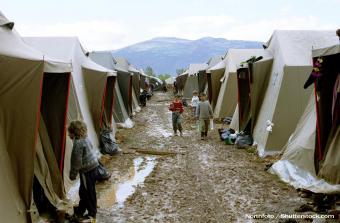Refugee & Asylum Policy
Recent Activity
UN Deputy High Commissioner for Refugees T. Alexander Aleinikoff joined Kathleen Newland for a discussion on the Syrian refugee and internally displaced population, now considered one of the biggest humanitarian emergencies in a generation.
With global mobility on the rise, the international community is finally grappling with the challenge of stranded migrants, which is one of the main agenda items for the High-level Dialogue on Migration and Development in the UN General Assembly in October 2013.
Burma, a resources-rich yet impoverished nation also known as Myanmar, rejoined the international community in 2011 after a military junta loosened its grip. Before the Southeast Asian nation opened its borders, Burmese migrated primarily for low-paid, clandestine work in Thailand but also as a result of violence and natural disasters. This article explores how the country’s recent transition has impacted Burmese migration flows.
Many countries, and in particular the United States, have begun granting asylum claims filed on the basis of sexual orientation in the past few decades. Despite the efforts by U.S. and other governments to reinforce protection for LGBT refugees, this community remains a marginalized group.







The Lampedusa Tragedy Prompts the Question: Does the UN Have Any Impact on the World’s Migrants?